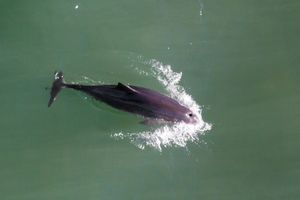PAL-CE
| Kurzname | PAL-CE: PAL use in German waters - Current efficiency and mode of operation |
| Förderer | Federal Agency for Nature Conservation (BfN) |
| Laufzeit | October 2021 - October 2024 |
| Kooperationspartner | Thünen Institut für Osteefischerei University Aarhus, Section for marine mammal research, Department of Bioscience Meereszoologie |
| Projektleitung | Dr. Michael Dähne |
| Projektmitarbeiter | Dipl.-Biol. Ole Meyer-Klaeden |
Bycatch of harbour porpoises and small dolphins remains one of the biggest challenges for nature conservation in the coming decades. In Schleswig-Holstein, a voluntary agreement has been in place since December 2013 between the fishing associations, the Ostsee lnfo-Center Eckernförde (OIC) and the state of Schleswig-Holstein. According to this voluntary agreement, participating fishermen must shorten their nets depending on the length of their vessel. Since 2018, fishermen who equip their nets with Porpoise Alerting Devices (PAL) no longer have to reduce the net length.
PALs emit artificial porpoise-like clicking sounds that resemble an aggressive clicking sequence and are designed to alert porpoises and make them aware of the net. This system is designed to ensure that the porpoises learn over time that the signal is associated with potential danger. While this principle has been shown to reduce bycatch rates of harbour porpoises, it is currently unclear
- whether PALs work over long periods of time or whether they lose efficiency in reducing bycatch over time,
- whether PALs permanently alarm harbour porpoises, or whether this principle changes over time, and
- how PALs may affect the spatial distribution of harbour porpoises over longer periods of time.
The PAL-CE project aims to answer these questions by comparing the echolocation behaviour and approach distances of harbour porpoises in areas where harbour porpoises may be habituated (waters off Schleswig-Holstein) and in areas where harbour porpoises are most likely less habituated (waters off the north coast of Denmark and/or Sweden). In addition, the project involves working with fishermen in a stakeholder process to jointly evaluate the voluntary agreement in its current form and to work out possible improvements for this agreement together with fishermen.
